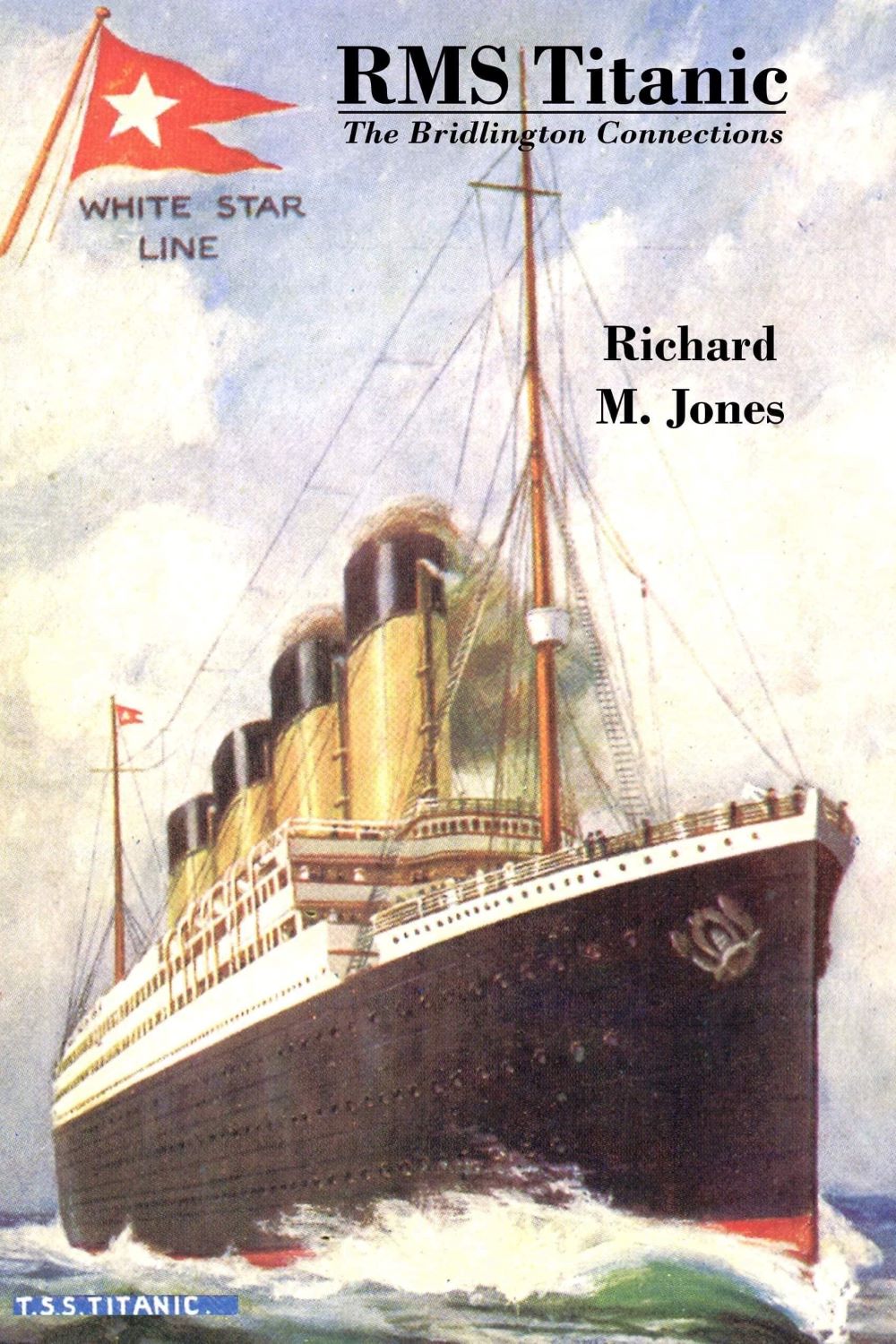reviewed by Chris Richards.
This history book is about the RMS Titanic and its links to Bridlington in Yorkshire. The tone is sensitive and celebratory of the people who made history over the last hundred years. Richard M Jones was an eleven-year-old boy when his enthusiasm for the Titanic story was sparked. The book is dedicated “To those who keep the memory of the Titanic alive” – this resonates with me. As a Sotonian, I feel a sense of ownership of the Titanic’s story; a deep connection to all those who were from our streets who perished over a century ago. The sinking of the Titanic is a topic in our primary schools, featured in numerous monuments in the city, and the lessons learned, tragic and otherwise, are championed in the museum in Southampton city centre. This slim volume does not disappoint.
Jones leads his reader along the timeline, beginning in Belfast. Old misconceptions and blatant inaccuracies from modern adaptations are cleared up and accounted for while small details are presented to keep even the most informed reader intrigued. The disaster is presented technically but also with sensitivity and affection. Affection for the subject matter, its historical importance, and the significant people whose relationships and bravery shine from the page. There is a constant sense that the people are the most important links between then and now. Objects and artefacts are made special by those who owned them and the stories they have amassed over the century. The recounts of the sinking of both RMS Titanic and HMS Falcon are told with clear authority and intimate knowledge of these kind of vessels.
More than 20 years of research worked around his military and family commitments, has resulted in an extensive archive, successful memorial campaigns, and ten published fiction and non-fiction books for Richard M Jones; a long serving member of the Royal Navy, family man and local historian specialising in shipwrecks and other historical disasters. This is by no means the first book we have from Jones and importantly not the last. The readership who will find the most satisfaction in this book will be versed in maritime history, but it also inspires a need to find out more and raises as many questions as it answers.
The potential for this subject matter is limitless and will remain so if people like Jones and his fellow enthusiasts keep sharing their passion. This could be an introduction for those that find the same spark that Jones felt in his preteen days which includes important caveats and details to be celebrated. This book proves that the incidents surrounding all that happened to the Titanic are not in isolation. The disaster became life experiences for those who survived and moved on. Charles Herbert Lightoller’s service is distinguished and features prominently. It is clear Lightoller’s biography has played a defining role in Jones’s writing and research, there is clearly a lot to be respected, much of it in this book. The story of the RMS Titanic is still being written. Historians and Enthusiasts, like Richard M Jones are making sure of that.
Published by Lodge Books. Out now.

